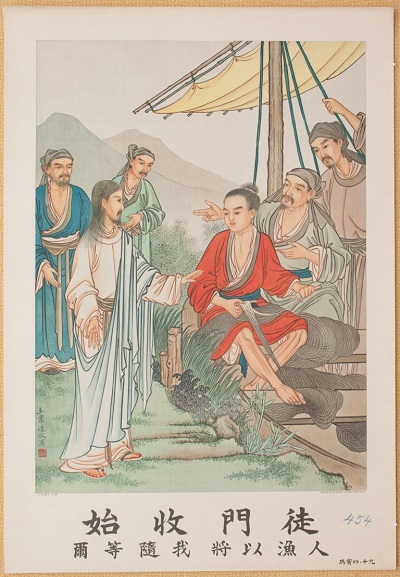The problem with the film adaptation of Dan Delillo’s White Noise?
There’s not enough of it.
White noise, that is.
Or spirituality for that matter, but we’ll get to that in a minute.
DeLillo’s book is (in part) about the landscape in which we postmoderns dwell, a landscape suffused with, well, white noise. A continual buzz of stimulation, information and entertainment that surrounds us, builds narratives and ultimately distract us from the issue that’s tormenting us all: death.
In Baumbagh’s film, while mostly watchable and entertaining in its own way – until the painful last third – we don’t pick up on that, we don’t sense that, we don’t hear or see any of that. It’s a mildly quirky suburban dramedy that resolves itself in near-sweetness, which the novel does not, at all. He captures the “white noise” of family life, but beyond that, no. There’s really not much mystery here, and White Noise the novel is suffused with uncertainty and mystery. The most concrete example of this is the Toxic Event itself – its nature is never made clear or explicit in the novel, but in the film, oddly, it’s explained (a collision). I think that’s the movie’s biggest mistake, by far.
(There are others: Both Gerwig and Driver are a bit too young, Gerwig especially. In the movie, the youngest child, Wilder, is the offspring of the oft-married Jack and Babette, but in the novel, none of the children are fully related to anyone else in the family, which is important – the family is thoroughly postmodern – a collection of individuals. In the novel, Babette doesn’t appear in that last sequence of events.)
This isn’t a film I want to write about as much as I want to chew over it with someone else who’s seen it and also read the novel. There’s just a lot to say, notions and insights that emerge when I consider, not what the film includes, but what it doesn’t.
First off, please know that, um, I’d never read DeLillo before last week, when the coming film inspired me to check out the novel. It wasn’t as long as I expected, and I thought I’d knock it off fairly quickly, but that didn’t happen. It took me a good week to finish it, not because it’s impenetrable or dauntingly complex, but because it’s stuffed. I wouldn’t say it’s rich, either – just…stuffed.
And so I think this post will turn more on the novel than the film, with a bit of circling back at the end.
As I read White Noise I was put in mind of Walker Percy, and wondered if anyone had ever written comparing the two. A quick search didn’t turn up much, but yes: the vaguely apocalyptic landscape, the fractured family, the puzzled male protagonist, and – this is important – the medicalization of soul problems. When you are taking pills to ward off your fear of death, seems like that’s Percy territory.
Not surprisingly, I experienced White Noise (the novel) as not just a satire of contemporary American life, but also an exploration of spiritual presence and absence. Joshua Ferris lays it out quite well in this piece, so I’ll quote him. At length.
White Noise begins and ends with a ritual. The first is the cavalcade of station wagons arriving for the new school year, which Jack describes as a spectacle—“a brilliant event, invariably”—and which he has not missed in 21 years. It ends with the communal nightly pilgrimage to the highway overpass where he, his family and his neighbors witness the exalted sunsets that might be a temporary result of fallout from the toxic spill or something permanently deserving of awe. “[W]e don’t know whether we are watching in wonder or dread,” he says, as if commenting upon the entire phenomenon of white noise itself. In the end, neither he nor Delillo provides an answer.
Between these two rituals, the attentive reader encounters the high priest of Hitler Studies who tries to both evade and master death through his submersion in a “larger-than-death” figure; the ascetic-visionary-guru Murray Jay Siskind; the fundamentalist Alfonse Stompanato who discusses pop culture with the “closed logic of a religious zealot, one who kills for his beliefs”; amulets and vestments, like Jack’s copy of Mein Kampf, which he clutches to his chest at moments of discomfort, and his dark black glasses and heavy academic robe which bestow upon him “the dignity, significance and prestige” appropriate to priests; the rhetoric of exhortations as issued from some holy order found in Jack’s command “May the days be aimless. Let the seasons drift. Do not advance the action according to a plan”; amulets like the visor Denise wears day and night and later the protective mask Steffie refuses to take off; glossolalia; invocations (“Dacron, Orlon, Lycra Spandex,” “MasterCard, Visa, American Express”); the use of drugs, in this case not for ecstatic religious purposes but for death assuagement; numerology (“Is death odd-numbered?”); congregations, whether at the supermarket, on the overpass or in the classroom; superstitions (“It is the nature and pleasure of townspeople to distrust the city”); the miracle of Wilder’s unharmed tricycle ride across the freeway; and many other customs, rites and rituals, not only that of Friday-night TV, but Jack’s more “formal custom” afterwards of reading deeply into Hitler; the heavy visitation to the most photographed barn in America (“Being here is a kind of spiritual surrender… we’ve agreed to be part of a collective experience,” Murray tells Jack, elevating a scene typically presented as a lament about the simulation’s preeminence over the real—the photograph of the barn over the barn itself—to one of overt religious import that better explicates Josiah Royce than Jean Baudrillard), and finally Babette’s very secular custom, conspicuously occurring in the otherwise inactive Congregational church, of teaching the elderly how to stand, sit and walk, later upgraded to eating and drinking.
This overwhelming litany of how Delillo fleshes out traditional religious elements in the post-Christian world of White Noise is not exhaustive. He has done nothing short of scuttling the entirety of established religious systems only to remake one, full of the same structures and accoutrements, out of the stuff of American cultural life, very often out of the same white noise that doubles in the book as the agent of death against which those structures and accoutrements are intended to protect. The protective devices of this new pseudo-religion meet with mixed success in giving comfort to Jack Gladney as he struggles with his death fears, but no matter. Their domain is not so one-dimensional as to provide only protective devices. They also reveal to him glimpses of greater meaning, of awe and of transcendence. Above all, they reveal that Delillo goes beyond cultural assessment in White Noise to show—if we didn’t know it already from The Names—that he is a writer deeply, almost preternaturally attuned to the eternal human encounter with what constitutes the religious and the spiritual.
Yes, you’re reading that having watched the film and wondering…what?
In another article (somewhere), I read about the character of Wilder, the youngest child in the family. Those of you who have only watched the film will find my description unrecognizable. What’s in the film in general is very faithful the book – what makes the adaptation so unsatisfactory is what is left out, which is a lot of important elements: most of all, the sense of white noise and the spiritual ghosts, including what DeLillo gives us in Wilder.
In the movie, he’s just a young child who is carted around and only speaks once, and whose presence, his mother says, makes her happy.
In the novel he’s quite different. His silence is often commented upon – it is not clear whether his worldlessness is a choice or a disability. He does make noise, though – especially one day when he cries, weeps and wails from dawn to dusk. This is an important and lengthy interlude in the book. No one knows what to do. Wilder just cries and cries. They take him to the doctor. He keeps crying. But it’s not just crying. It’s a profound, deep keening – DeLillo uses the word – that his stepfather experiences, in part, as something profound with which he feels a desire to connect. In the midst of all the distracting white noise, here’s a deeply human noise coming from a real place, and so Jack, being a human, and being a human who thinks about death, senses it comes from a place where he might find…something. “It might not be so terrible to have to listen to this a while longer,” he thinks.
The family members’ responses and interactions with Wilder are almost like those of worshippers to a holy presence in their midst – they take care of him, they fawn over him, they respond to him ritually (yes yes yes yes). And in the end, when Wilder mounts his tricycle and rides across all the lanes of the highway without being harmed, we sense that he is, indeed, something special – even if that specialness resides in his innocence and, in the midst of a world that fears and denies death, his fearlessness.
Baumbach either didn’t understand or chose to ignore the spiritual implications of White Noise. It really is, as Ferris says, a book that invites us to look at and listen to the world around us and consider the possibility that we are still worshipping, we are still ritualizing, we still are looking for miracles and listening to sacred texts, and none of it seems to be helping.
I want to say something about the closing credits sequence. It’s a long (8-minute) stylized dance routine, involving all the characters, in the, bright, gleaming A & P. In White Noise, the supermarket functions in the same way the village church would – a gathering place, a place to build community, to fill one’s needs, to admire human ingenuity and creativity, but today, controlled and given, rather than evolved from who we are in an organic way. I suppose Baumbach conceived this sequence a way to communicate that. A supermarket scene closes out the novel, as well. But let’s look at the difference:
In the novel, the last chapter is composed of three scenes: Wilder with his tricycle, the gathering to watch the sunset, and then the supermarket. But what happens in the store? Well, the shelves have been rearranged. People – especially older people – are confused.
The supermarket shelves have been rearranged. It happened one day without warning. There is agitation and panic in the aisles, dismay in the faces of older shoppers.[…]They scrutinize the small print on packages, wary of a second level of betrayal. The men scan for stamped dates, the women for ingredients. Many have trouble making out the words. Smeared print, ghost images. In the altered shelves, the ambient roar, in the plain and heartless fact of their decline, they try to work their way through confusion. But in the end it doesn’t matter what they see or think they see. The terminals are equipped with holographic scanners, which decode the binary secret of every item, infallibly. This is the language of waves and radiation, or how the dead speak to the living. And this is where we wait together, regardless of our age, our carts stocked with brightly colored goods. A slowly moving line, satisfying, giving us time to glance at the tabloids in the racks. Everything we need that is not food or love is here in the tabloid racks. The tales of the supernatural and the extraterrestrial. The miracle vitamins, the cures for cancer, the remedies for obesity. The cults of the famous and the dead.”
Read Full Post »






























































